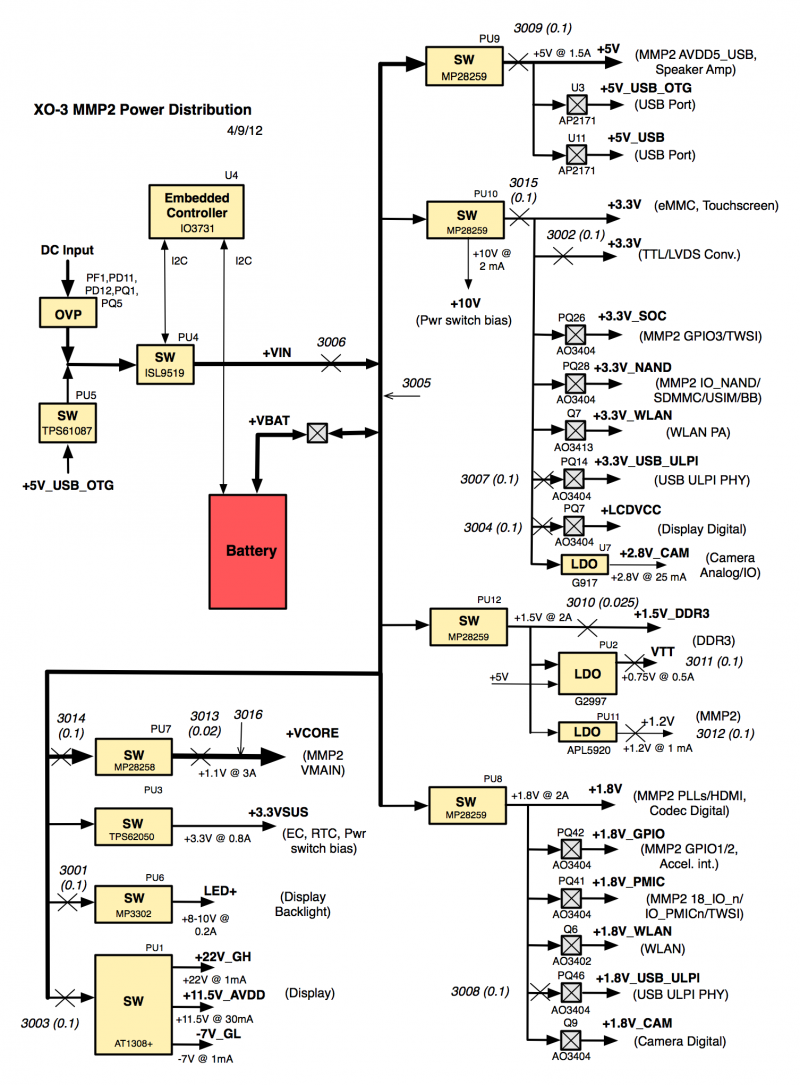XO3 Tinderbox Power
This page describes the Tinderbox version of the XO-3 A1 tablet.
Power Distribution
The following diagram attempts to illustrate the XO-3 power distribution network, as well as the tinderbox measurement points:
Measurement Points
There are two types of measurement point in the above diagram. Most measure power passing through a particular point in the power distribution network, and are represented by a large X, along with an annotation of the voltmeter channel and measurement resistance. All measurement resistors have a tolerance (variation in resistance) of 1% or smaller.
A smaller number of points (3005, 3010) measure the voltage at a particular point in the power network. These are indicated by an arrow, and annotated solely with the voltmeter channel.
The definitive file describing this setup is the tinderbox configuration file.
Many of the system components are similar to those in the XO-1.75 laptop, and have been documented in the XO-1.75 Tinderbox.
Example Measurements
Example readings taken using this setup are available at http://dev.laptop.org/~wad/cl3_a1/. Some of these measurements are highlighted below.
Measurement Error
It should be cautioned that using a multiplexed voltmeter for measurement of power in a dynamic system has its downsides.
Display Power
One attempt at measuring the power consumed by the display was to force the screen to blank using:
echo 1 > /sys/devices/platform/pxa168-fb.0/graphics/fb0/blank
The results can be seen at linux_nodisp.html. They show that no external components were powered down, as well as no reduction in power consumed by the SoC (compare it to linux_idle.html) which we expect to see. The backlight power is weird as well...
USB ULPI Interface
The idle power consumption of this interface is around 20 mW (Idle).
Full power measurements to come
